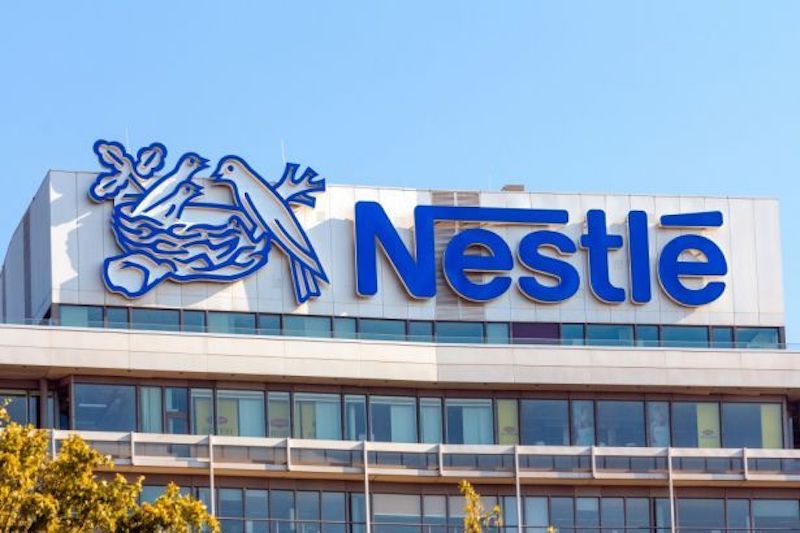


Nestle Nigeria Plc: Hampered by huge finance costs
Introduction
A thorough analysis of Nestle’s current financial report shows that the 2023 financial year was not a good one for the company. While it made good sales (as evidenced by the higher turnover figure), growing finance costs completely overshadowed the company’ profit. To this end, it was unable to turn a profit, recording a loss for the year instead.
Because of this, all the company’s profitability ratios for the year went south.
Growth indices
For its 2023 financial year, Nestle recorded a growth in its gross earnings. Gross earnings for the year stood at N547.12 billion, 22.5 percent higher than the N446.81 billion recorded in the preceding year. This 22.5 percent growth rate is as compared to a slightly higher growth rate of 27.0 percent in 2022.
Because direct costs grew a little more slowly than turnover did, gross profit grew a little faster than gross earnings did, growing by about 39.4 percent, better than the 18.1 percent growth rate recorded in the prior year.
Meanwhile, non-direct costs also grew much higher while finance cost ballooned extraordinarily, such that the company recorded a pre-tax loss and an after-tax loss instead of profits. Nestle was left with a pre-tax loss of N104.03 billion and an after-tax loss of N79.47 billion. These are as compared to profits in the prior year.
Total assets for the year stood at N581.77 billion, up from N415.04 billion in 2022 and translating into a 40.2 percent growth rate. Total liabilities, however, grew much faster by 71.5 percent to N659.81 billion from N384.75 billion, while shareholders’ funds declined by a whopping 357.6 percent to negative N78.04 billion. The reason for a negative equity value was because the negative retained earnings was transferred to the shareholders’ funds.
Profitability ratios
There was a massive general decline in the company’s profitability ratios for 2023. In fact, the company had negative profitability ratios instead of recording real profitability.
For instance, there was a loss margin instead of a profit margin. Loss margin stood at 19.0 percent, down from a positive 15.9 per cent profit margin in the preceding year. What this means is that the company recorded a loss of N19.00 for every N100 earned in 2023, in contrast to the N15.90 out of every N100 that made it to the profit position in 2022.
Return on assets (ROA) followed a similar pattern. ROA for the year declined to negative 17.9 percent from a positive 17.1 percent in 2022, meaning that every N100 worth of assets deployed contributed N17.90 to the pre-tax loss for the year, a far cry from the N13.70 pre-tax profit added in 2022.
Return on equity (ROE) also declined to a three year low of a negative 101.8 percent, meaning that every N100 worth of equity employed made Nestle an after-tax loss of N101.80.
The losses for the year cannot really be traced to an increasing operating margin (but rather to huge costs of financing). For the year, operating margin (which measures what proportion of turnover is used to finance operations) was 17.2 percent, not a terrible result in and of itself.
Staff matters
The company’s losses for the year coloured just about all of its ratios, including staff profitability ratios. For instance, each employee contributed N43.80 million to the company’s pre-tax loss (instead of profit), a huge way down from the profit of N30.65 million contributed on the average in the prior year.
Despite this, Nestle increased its staff cost per employee. On the average, wages and salaries earned by each staff increased to N17.19 million during the course of the year, up from N14.99 million in the preceding year.
However, the company did not put itself out more than was necessary. Staff costs as a proportion of turnover pretty much stayed at the same level per cent during the course of the year. The result was 7.5 percent, not much different from the 7.8 percent recorded in the prior year.
Other ratios
For the year, Nestle’s short-term assets increased to N361.24 million while its short-term liabilities increased to a collective N290.64 million. The interplay between this two had a reducing effect on its current ratio. At 1.2 times, current ratio was a little lower than that of the prior year and competed favourably against industry standards. What this means is that for every one Naira of short-term obligations, the company had N1.20 in short-term assets, and was more than able to meet obligations as at when due.
The company had a debt-to-equity ratio of negative 8.5, as compared to a debt-to-equity ratio of 12.7 in the prior year.
Nestle Vs PZ Cussons: PZ Cussons superior
PZ Cussons and Nestle are competitors, and both have been operating on the Nigerian conglomerate scene for years. While Nestle is currently the bigger of the two in terms of sales generation and assets employment, PZ Cussons is better when it comes to profit retention. Of the six profitability ratios we examined, Nestle only took the lead in turnover growth rate, while PZ Cussons took the lead in the remaining five.
Sales generation and profit retention
As usual, Nestle recorded more sales in 2023 than PZ Cussons did. Also, Nestle’s growth rate for the year was much better than PZ Cussons’. This said, PZ Cussons was better able to translate its sales into profit. It had a positive pretax profit growth rate as compared to Nestle’s decline rate. It also had a profit margin, as compared to Nestle’s loss margin for the year under review.
Returns
PZ Cussons recorded better returns on assets and on equity for the 2023 financial year. Return on assets (ROA) and return on equity (ROE) were 12.3 percent and 29.7 percent respectively. Meanwhile, Nestle had negative returns. For Nestle, ROA was negative 17.9 percent while ROE was negative 101.9 percent.
Conclusion
In the above analysis, the profitability ratios of Nestle for the 2023 financial year were compared with its ratios for the 2022 year. And the conglomerate did not do well for itself, bogged down as it was by huge finance costs. Its result was also subpar when compared with those of other conglomerates for the 2023 FY.
It remains yet to be seen if the 2024 FY will be a different one, in terms of profitability, for Nestle.



